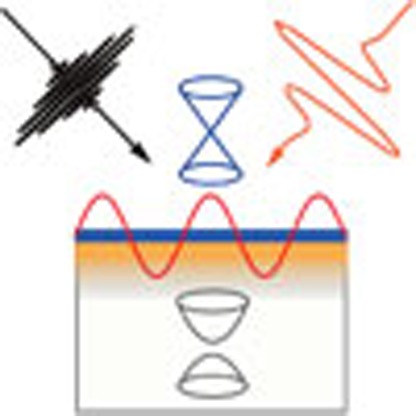- Record: found
- Abstract: found
- Article: found
Ultra-high modulation depth exceeding 2,400% in optically controlled topological surface plasmons

Read this article at
Abstract
Modulating light via coherent charge oscillations in solids is the subject of intense research topics in opto-plasmonics. Although a variety of methods are proposed to increase such modulation efficiency, one central challenge is to achieve a high modulation depth (defined by a ratio of extinction with/without light) under small photon-flux injection, which becomes a fundamental trade-off issue both in metals and semiconductors. Here, by fabricating simple micro-ribbon arrays of topological insulator Bi 2Se 3, we report an unprecedentedly large modulation depth of 2,400% at 1.5 THz with very low optical fluence of 45 μJ cm −2. This was possible, first because the extinction spectrum is nearly zero due to the Fano-like plasmon–phonon-destructive interference, thereby contributing an extremely small denominator to the extinction ratio. Second, the numerator of the extinction ratio is markedly increased due to the photoinduced formation of massive two-dimensional electron gas below the topological surface states, which is another contributor to the ultra-high modulation depth.
Abstract
 For optical control of plasmons metals require a large amount of power in the control
pulse, yielding a small modulation depth. Here, Sim
et al. fabricate arrays of Bi
2Se
3 and report a modulation depth of 2,400% at 1.5 THz with an optical fluence of 45 μJ/cm
2, demonstrating a novel route for controlling plasmons.
For optical control of plasmons metals require a large amount of power in the control
pulse, yielding a small modulation depth. Here, Sim
et al. fabricate arrays of Bi
2Se
3 and report a modulation depth of 2,400% at 1.5 THz with an optical fluence of 45 μJ/cm
2, demonstrating a novel route for controlling plasmons.
Related collections
Most cited references22
- Record: found
- Abstract: found
- Article: found